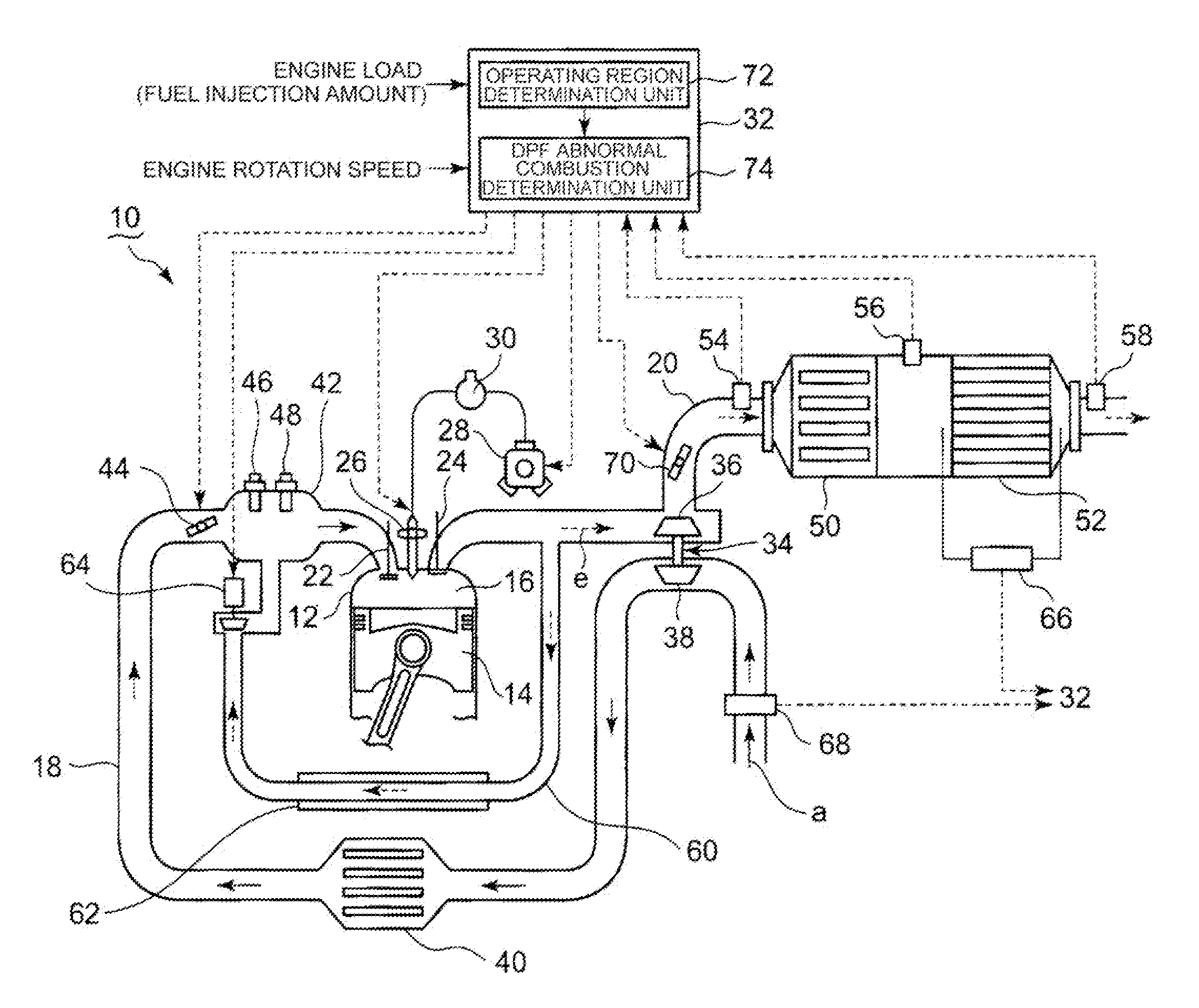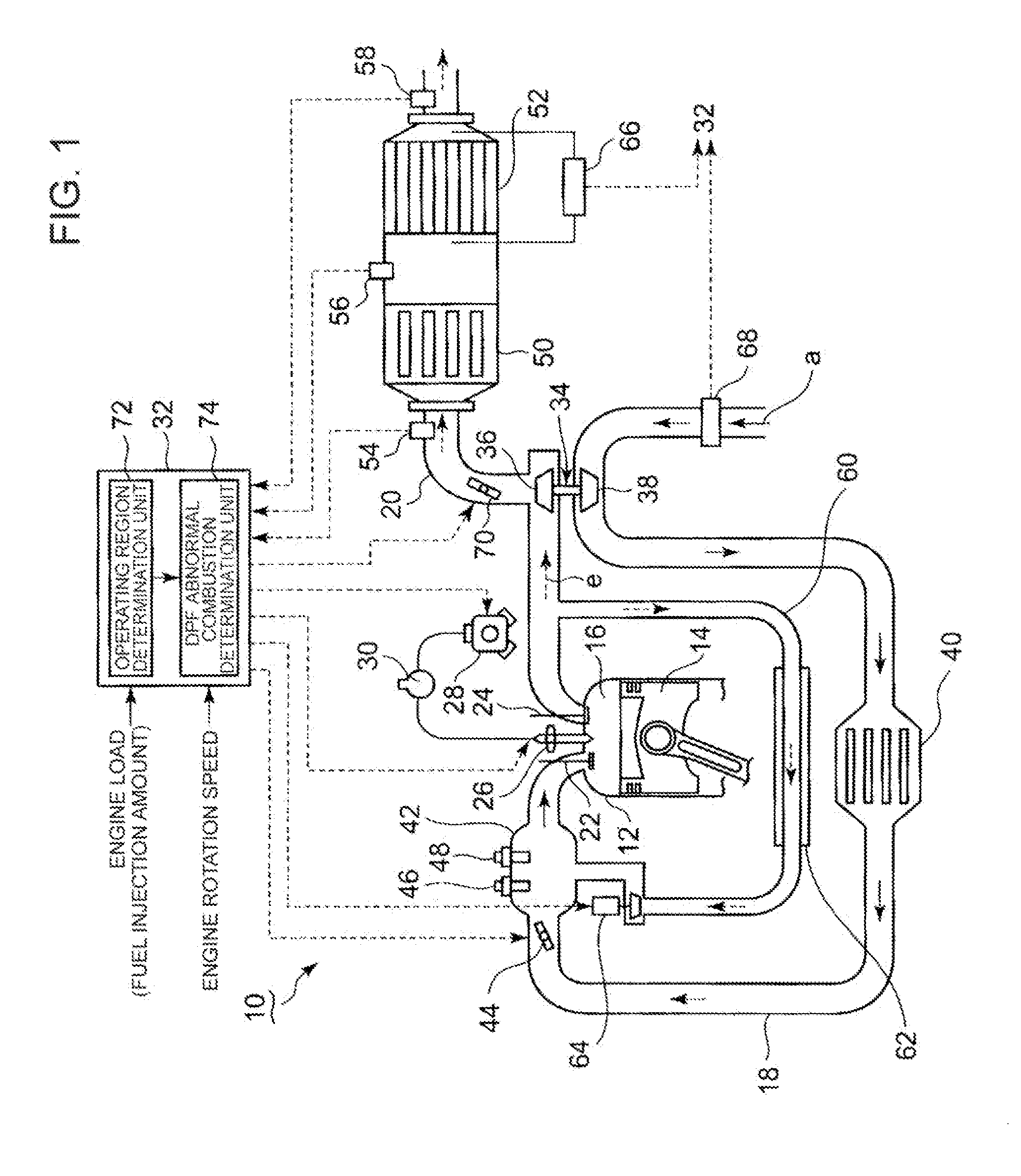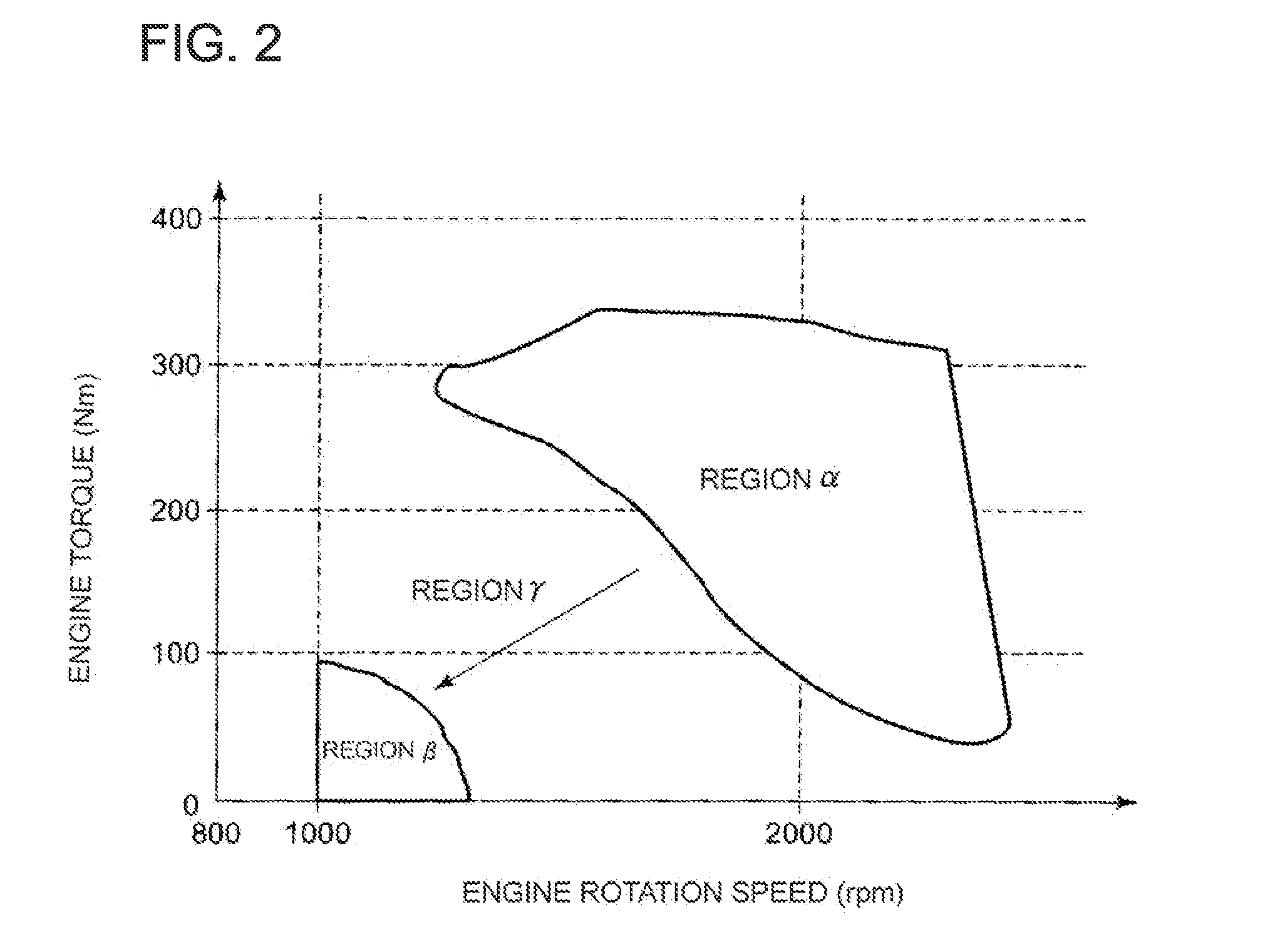Aftertreatment system and control strategy for internal combustion engine
- Summary
- Abstract
- Description
- Claims
- Application Information
AI Technical Summary
Benefits of technology
Problems solved by technology
Method used
Image
Examples
first embodiment
[0063]A first embodiment in which the method and device according to the present invention are applied to a diesel engine will now be described using FIGS. 1 to 3. In FIG. 1, a piston 14 is built into an interior of a combustion cylinder 12 of a diesel engine 10, and a combustion chamber 16 is formed above the piston 14. An intake pipe 18 and an exhaust pipe 20 are connected to a cylinder head of the combustion cylinder 12. An intake valve 22 and an exhaust valve 24 are provided in respective connecting portions between the intake pipe 18 and exhaust pipe 20 and the combustion cylinder 12.
[0064]An injector 26 that injects fuel into the combustion chamber 16 is provided in a central upper portion of the cylinder head. Fuel such as light oil is supplied to the injector 26 at high pressure from an injector pump 28 via a common rail (an accumulator) 30, and the injector 26 injects the fuel into the combustion chamber 16. An injection timing and an injection amount of the fuel are contro...
second embodiment
[0091]Next, a second embodiment of the method and device according to the present invention will be described using FIGS. 5 and 6. The configuration of the diesel engine 10 according to this embodiment is identical to the first embodiment. As shown in FIG. 5, in the control procedures according to this embodiment, Steps 24, 25, and 26 differ from the first embodiment, but all other steps are identical to the first embodiment.
[0092]In Step 25 of this embodiment, an accumulated amount of PM collected in the DPF device 52 is estimated. As regards an estimation method, the collected PM amount can be determined by determining the fuel injection amount and a fuel combustion amount input into the ECU 32 as functions of the exhaust gas temperature, and subtracting the fuel combustion amount from the fuel injection amount. Alternatively, the accumulated PM amount can be determined from the differential pressure of the exhaust gas to the front and rear of the DPF device 52, which is determine...
PUM
 Login to View More
Login to View More Abstract
Description
Claims
Application Information
 Login to View More
Login to View More - R&D
- Intellectual Property
- Life Sciences
- Materials
- Tech Scout
- Unparalleled Data Quality
- Higher Quality Content
- 60% Fewer Hallucinations
Browse by: Latest US Patents, China's latest patents, Technical Efficacy Thesaurus, Application Domain, Technology Topic, Popular Technical Reports.
© 2025 PatSnap. All rights reserved.Legal|Privacy policy|Modern Slavery Act Transparency Statement|Sitemap|About US| Contact US: help@patsnap.com



